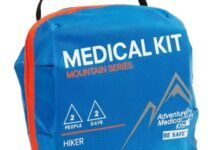I am wondering why boat manufacturers use bedding compound instead of gaskets to seal deck hardware and fittings. It seems, at least on my boat, that the bedding compound dries up within a few years, and then the fittings no longer keep out water. Sure, bedding compound is much less expensive, but wouldn’t gaskets a better solution requiring less maintenance?
Marc Burcar
Montreal, Quebec
Most boat builders would likely leap at the opportunity to use gaskets if hardware makers provided preformed, adhesive gaskets for leak-prone hardware, and many builders commonly use butyl rubber gasketing tape to bed hatches and ports. Its important to remember that not all bedding materials are created equal, and unlike older, paste-like bedding compounds that dried out to crusty uselessness in a few years, todays sealants can go 20 years or longer without drying out. When the right sealant/adhesive is used properly, an effective and durable seal can be achieved. The key is to pick the right product and prepare both surfaces properly. Adhesive sealants made by 3M (www.3m.com), Sikaflex (www.usa.sika.com), and Dow (www.dow.com) are reliably good quality and will outlast gaskets made from inferior-grade compounds.
If you’re interested in trying gasketing materials, look into butyl rubber tape options. We have had great success using Bostik butyl gasket tape (www.bostik-us.com) and Bomar mounting tape (www.pompanette.com) in hatch installations. Catalina Yachts Gerry Douglas told us that Catalina uses the butyl rubber tape extensively with very good, long-lasting results. He explained that butyl tape is a uniform thickness and width, insuring there is always the correct amount in the right place, and cleanup is easier because it doesn’t run out under compression and does not require a solvent, which can attack the bedding material and shorten its effective lifespan.
We also know of some boat owners who use neoprene rubber (1/8- and 1/16-inches thick) as a gasketing and bedding material for deck hardware, and they report that its effective and long lasting. However, we’ve not tested it, nor have we had any experience with it in bedding hardware on our boats. While neoprene rubber wouldn’t harden over time like standard rubber gaskets, we would be concerned that the material wouldn’t be able to fill the nooks and crannies as well as a liquid goo sealant can-especially in places where fasteners pass through, etc.
Sealing glass to aluminum
I am re-sealing large glass windows to their aluminum frames on an older, heavy catamaran sailboat. This was not covered in your August 2012 test of adhesives, caulks, and sealants, as far as I can tell. I need gap filling, adhesion to both surfaces, UV tolerance, and flexibility. Which caulk would you recommend?
Lynn Robinson
There are varied views among hatch and port manufacturers as to what should be used to bed the lens in a metal frame, so we suggest following the advice of the frame manufacturer. If you don’t know who made the frame-and can’t find out from the boat manufacturer-then one of the more adhesive modified silicones would be a good choice.
Prior to skinning over, silicone is a toothpaste-like gel that transforms into a flexible solid over a 24-hour period. The 3M Silicone (www.3m.com) proved to be a good, flexible sealant in our tests, and Boat Life’s Life Seal (www.boatlife.com) is also a good option.
A good anchoring pattern (sanded surface) and a solvent cleanup prior to application will also help to keep both surfaces bonded.
Another option is using butyl rubber tape as we discussed earlier. Its easy to use, easy to clean up, and it allows hardware to be removed easily because it is not an adhesive. However, it does have enough tack to maintain good surface contact through thermal cycles and deck flexing.





































Hi, I looked for the two products (tape/gasket) but have been dumbfounded by no findings.
Do you know if either of these products are still available?
My current hatches are 1/8” thick,16”x22” They are held back approximately 1/16”. I have 4. Two are located either side of the boom. One was stepped on recently and cracked.
My thought is to replace all 4 with 1/4” tempered glass. How much gap should I leave to create a watershed bevel between glass and frame?